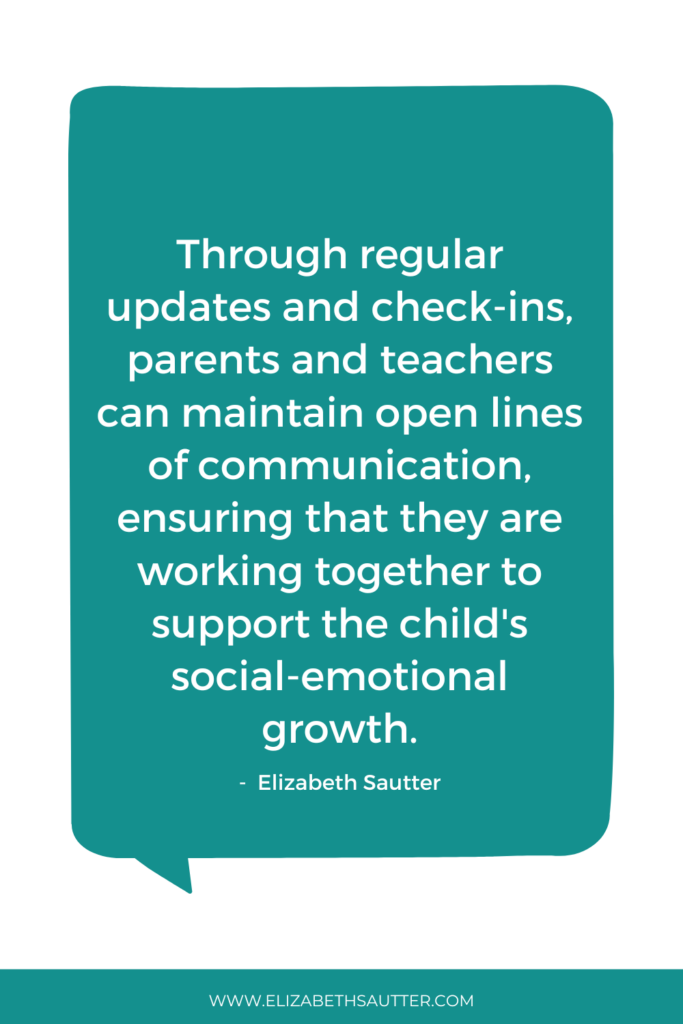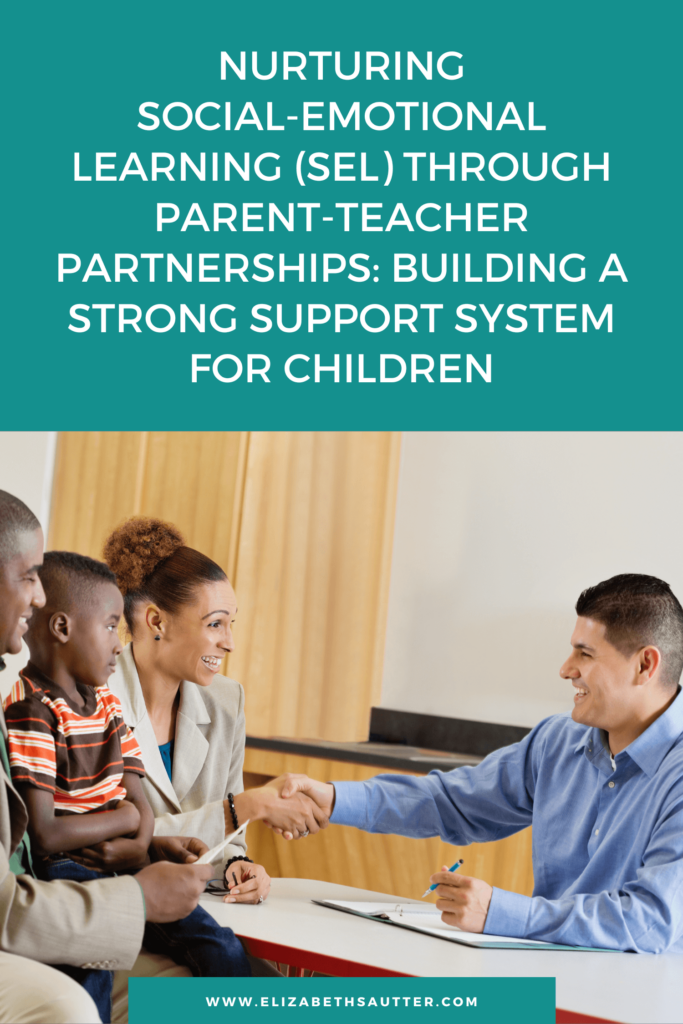As a new school year begins, parents and teachers have a unique opportunity to work together in fostering the social-emotional development of children. By forming a strong parent-teacher partnership, we can collectively alleviate overwhelm and burdens while building a solid support system for our children. Let’s explore some strategies to stay connected throughout the school year, empower children’s social-emotional learning (SEL), and create a collaborative environment that nurtures their overall well-being.
Building a Strong Parent-Teacher Partnership:
- Establish Open Communication Channels: Maintaining open lines of communication between parents and teachers is crucial. Regular check-ins, whether through emails, newsletters, or scheduled meetings, can provide opportunities to share updates, address concerns, and discuss strategies to support children’s social-emotional growth.
- Foster Mutual Trust and Respect: Building trust and respect between parents and teachers creates a foundation for effective collaboration. By valuing each other’s expertise and perspectives, we can form a united front in guiding children through their educational journey, emphasizing the importance of social-emotional skills.
Supporting Social-Emotional Learning:
- Share Resources and Information: Teachers can share resources, strategies, and educational materials related to social-emotional learning with parents. Likewise, parents can contribute valuable insights and experiences that can enhance classroom discussions and activities. This exchange of knowledge creates a collaborative approach to foster SEL both at home and in the school environment.
- Incorporate SEL into Curriculum and Home Life: Teachers can integrate social-emotional learning into the curriculum, designing lessons and activities that promote emotional intelligence, empathy, and problem-solving skills. Parents can reinforce these concepts at home by incorporating SEL discussions, reflection exercises, and engaging activities into their daily routines.
- Encourage Parental Involvement: Welcoming parents’ involvement in school activities and events strengthens the parent-teacher partnership and emphasizes the value placed on social-emotional development. Collaborative initiatives, such as workshops or family-oriented SEL programs, can engage parents actively and encourage their participation in their child’s learning journey.
Reducing Overwhelm and Burden:
- Establish Realistic Expectations: By setting realistic expectations for both parents and teachers, we can alleviate unnecessary stress and overwhelm. Recognizing that everyone has limitations and embracing a balanced approach to education can create a healthier and more sustainable learning environment for children.
- Emphasize Self-Care: Encouraging self-care practices for both parents and teachers is essential. Prioritizing well-being allows us to be more present and engaged in supporting our children’s social-emotional development. By taking care of ourselves, we model healthy habits and resilience to children.
Bridging Home and School:
One effective way to bridge the gap between home and school is by fostering open and ongoing communication. Parents can write a letter to the teacher about their child, sharing valuable insights into their child’s strengths, interests, and any specific social-emotional needs. For more details and a sample letter, click here. I have provided a sample letter for you here that is from my book, Make Social and Emotional Learning Stick! This letter serves as a foundation for understanding and collaboration, creating a stronger connection between home and school. Through regular updates and check-ins, parents and teachers can maintain open lines of communication, ensuring that they are working together to support the child’s social-emotional growth.

By forging a strong parent-teacher partnership, we can create a supportive environment that nurtures children’s social-emotional learning and reduces overwhelm. Together, parents and teachers form a team that empowers children, fostering their holistic development and well-being. By staying connected, sharing resources, and emphasizing collaboration, we build a solid support system for our children’s educational journey.
Check out “Make Social and Emotional Learning Stick!” for more tips on bridging home and school and further enhancing the parent-teacher partnership. Let’s embark on this partnership, embracing the power of social-emotional learning to create a brighter future for our children.

